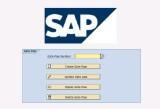The syllabus or content of a SAP Data Dictionary course typically includes:
1. Introduction to Data Dictionary:
- Basics and concepts
- Data elements
- Domains
- Data types
2. Tables and Structures:
- Creating tables
- Table maintenance
- Data element relationship
- Field attributes
3. Views and Search Helps:
- Creating views
- Search help objects
- Elementary search helps
4. Lock Objects and Table Buffering:
- Lock objects for data consistency
- Buffering techniques
5. Database Utility and Transport Requests:
- Database utility tools (DB utilities)
- Transporting dictionary objects
6. Foreign Key Relationships and Indexes:
- Establishing relationships
- Indexes for optimization
7. Advanced Topics:
- Check tables and values
- Append structures and include
- Database views
8. Exercises and Practice:
- Hands-on exercises
- Real-world scenarios
A comprehensive SAP Data Dictionary course syllabus covers a range of topics aimed at providing learners with a strong foundation in managing data structures within the SAP environment. The syllabus begins with an introduction to the fundamental concepts of the Data Dictionary, including data elements, domains, data types, and their significance in data management.
The syllabus then delves into the creation and maintenance of tables and structures. Students learn how to design tables, define field attributes, and manage table data through maintenance views. The relationship between data elements and domains is emphasized, as they play a critical role in maintaining data consistency and integrity.
Views and search helps are explored in the subsequent module, demonstrating how to create logical views that simplify data access. The course explains the creation of search help objects and their integration with data elements.
Lock objects and table buffering are covered to ensure students understand how to manage data concurrency and optimize data retrieval performance. The database utility tools are introduced to enable learners to perform essential database-related tasks.
Transporting dictionary objects is explained to help students understand the process of moving data dictionary artifacts between different SAP systems.
Foreign key relationships and indexes are discussed in detail, illustrating how to establish relationships between tables and enhance data retrieval efficiency using indexing techniques.
Advanced topics such as check tables and values, append structures, and database views are included to provide students with a well-rounded understanding of the capabilities and applications of the SAP Data Dictionary.
Throughout the syllabus, hands-on exercises and practical scenarios enable students to apply theoretical knowledge in real-world situations. By the end of the course, learners are equipped with the skills needed to confidently manage data structures using SAP Data Dictionary, supporting their proficiency in SAP data management tasks.








